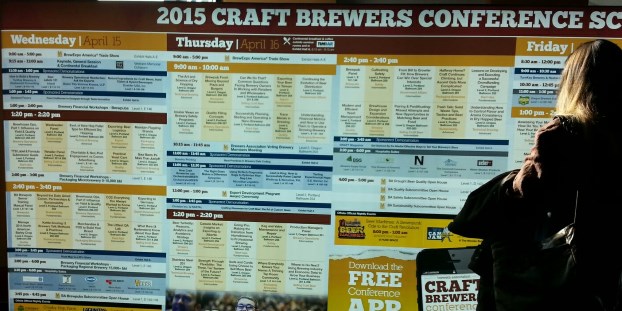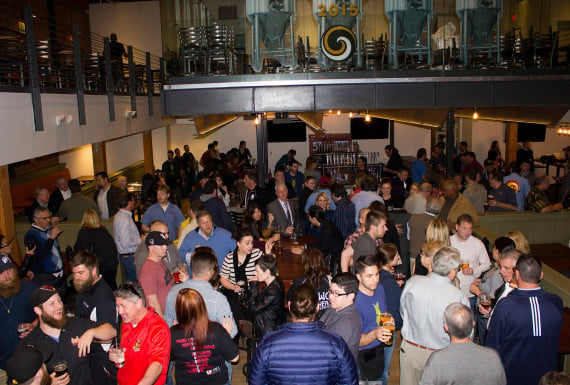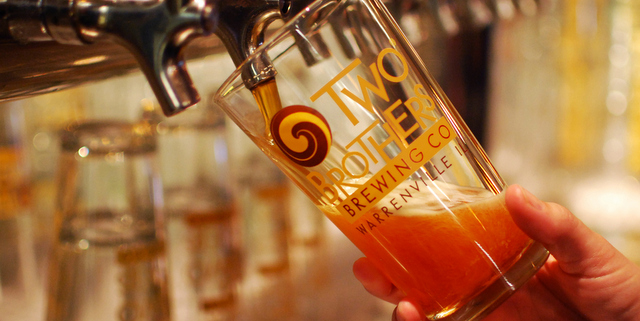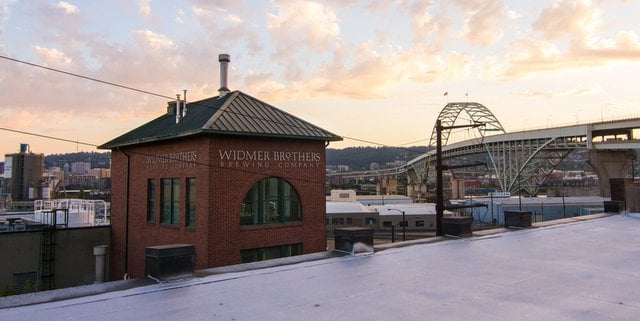CBB: Speaking of choices, talk about the tracks you put together. What topics did you feel were relevant to the brewing industry?
Jason: I’m on the marketing and packaging brewer tracks. We have to divvy it up now because there are so many tracks. For us, it was important to talk about a couple of big things. How does an established brand continue to stay relevant? That was a big push this year; so we did one on how to maintain a flagship brand. So we brought in some start-ups who had no flagship brand intentionally, and on that same panel we had Sierra Nevada and Deschutes — guys who have super established flagship brands. We got them to talk about each philosophy so the attendees could begin to think about which direction they want to go. It helps to hear people in the same boat — like Sierra who at one point was 80 percent pale ale just 15 years ago, and now it’s down to 50 percent of its sales. How do you maintain that flagship, and do you want to?
Another big thing is social media and marketing and POS, but the newest portion of the tracks that I put together, in its third year now, is exit strategies. Because you’ve got guys who have been in the business for 30 plus years. They weren’t looking at legacies. They were pioneers in this industry as a whole. Now, they’re saying, “I’m tired. This is great, and I’ve built a hell of business, but what am I going to do? Maybe I don’t have kids or maybe my business partners just want to be finished — whatever it is — we need a way out.” It’s an interesting thought because even just 10 years ago, no one was thinking about that.
And how do you make them not feel guilty for wanting to get out. There’s nothing wrong with it. It happens in every single industry out there, right?
Jim: You have to retire at some point.

CBB: Sooner than later in our opinion. In non-retirement news, what’s cool and new with Two Brothers? We did a story not too far back on you guys expanding and working with Mueller for a new centrifuge and fermentation tanks.
Jason: We did a new centrifuge about a year ago — not quite a year ago. Two weeks ago we installed a new high-speed can line.
CBB: Nice. Who are you using?
Jason: We used CFT. They are actually an Italian company, but they have a U.S. headquarters right outside of Chicago; so they have all their techs in America so they can service all their equipment. Great people. They put the machine in, and we’re super happy with it. It does 300 a minute. We shoehorned it in. We’re really running out of space in the brewery — just like everybody else. Normally, we only buy American-made stuff, but we went with these guys because they have such a strong presence in the Chicago area, and we knew we could get the support we needed from them if anything goes wrong.
Jim: It’s the right size and capacity too. Sometimes it goes from the little machine to the huge machine, finding that middle ground can be kind of tough.
Jason: Also, I don’t believe there are any seamers made in America, so you have to get your seamers overseas anyway. So if you go with someone like KHS for your filler, they’re just going to buy a seamer from Angelus or someone like that and ship it over here and marry it up. CFT is the only company that makes its own seamer too, so it’s integrated into the whole system, so the footprint was a lot smaller. And we’re out of space, so that worked well.
Also, we just opened a brewpub and restaurant in Arizona — in Scottsdale — that’s been going for about eight weeks.
CBB: How did you decide on Scottsdale?
Jim: Family. We’ve been making the pilgrimage down there for about 15 years.
Jason: Almost 20.
Jim: What? Goddamn it. I hate getting old. Anyway, we got to know the market real well down there. In fact, we’re actually the first brewpub in Scottsdale. It’s funny. Scottsdale is the second largest city in Arizona. I think a big part of it is that 10 years ago Scottsdale was primarily a retirement city. Now, there’s a lot younger demographic moving there, so the dynamics and the pull of craft beer down there makes it a pretty interesting market.
CBB: Are you looking to do more of that? Brewpubs, expanding.
AT THE SAME TIME: Jim: Possibly. Jason: In Arizona.
Jim: Come on! He wants to move there in three years, and so he’s got these grand plans for Arizona.
Jason: Look [smiling largely], at this brewpub, we’re putting in a 10-barrel [bbl] brewhouse. The restaurant portion is the only part open now. There’s no brewing going on there now and all the beer is coming out of Illinois. But the 10-bbl brewery being made by Mueller in Springfield is coming soon.

CBB: You like those guys? Mueller?
Jason: We really like those guys. They have fantastic engineering, we’ve built a great relationship and we have a lot of their tanks. This worked out really well. It’s a very nice system, and we’re super excited about it. It’s going to be installed this summer. It leaves their plant in mid-August.
CBB: What kinds of beers will you brew?
Jason: All the year around beers will still come from Illinois, but they’ll be doing a lot more of the fun stuff. They’ll have five serving tanks in the system and there will be five beers on tap at the pub — just made there.
CBB: Can you tell us about the evolution of the beer lately. What cool new techniques are you using over at Two Brothers? Are their certain ingredients, brands or styles that you’re getting geeked about these days?
Sorry folks, you’ll have to tune in tomorrow to hear the answer of that question. Part II of the Ebel Dialogs will post at 12:30 p.m.





Two days with the two brothers behind Two Brothers Brewing http://t.co/y3SEMwLiTq via @craftbrewingbiz